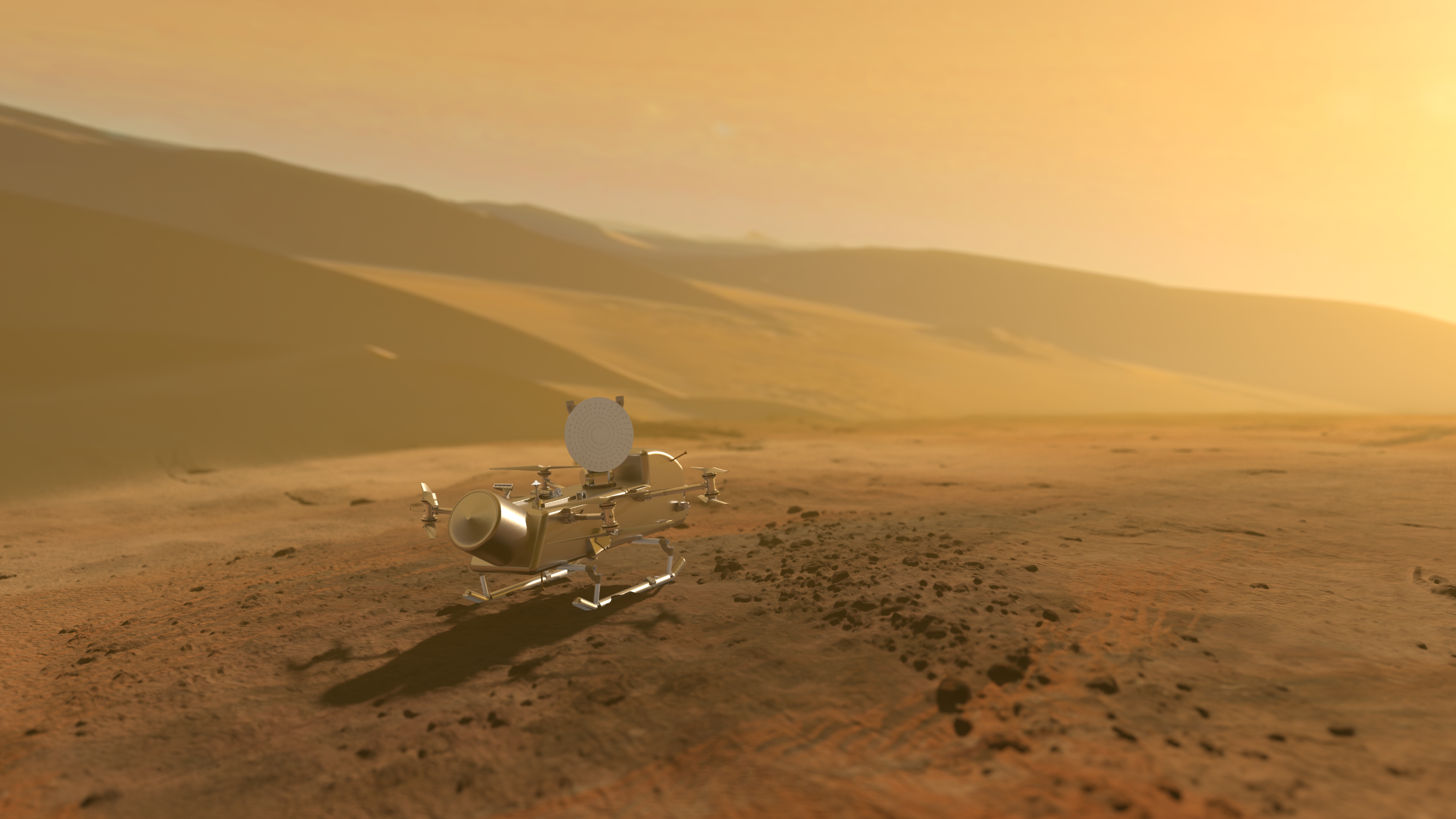4 min read
Cassini is orbiting Saturn with a 35.8-day period in a plane inclined 40.7 degrees from the planet's equatorial plane. The most recent spacecraft tracking and telemetry data were obtained on April 29 using one of the 34-meter diameter Deep Space Network (DAN)stations at Canberra, Australia. Except for the science instrument issues described in previous reports (for more information search the Cassini website for CAPS and USO), the spacecraft continues to be in an excellent state of health with all of its subsystems operating normally. Information on the present position of the Cassini spacecraft may be found on "Eyes on the Solar System".
Cassini took advantage of its extreme distance from Saturn during the week to collect unique science data, and to manage its orbital trajectory. At apoapsis on Sunday, the spacecraft had coasted "up" to a height of 3.4 million kilometers from the planet, somewhat short of the distance out to Iapetus's orbit. (That large moon, though, was nowhere near Cassini's vicinity at the time.)
Wednesday, April 23 (DOY 113)
The Magnetospheric Imaging Instrument (MIMI) took command of Cassini's pointing for 14.75 hours to make its third observation in the latest campaign studying Saturn's north-polar aurora. Using its Ion and Neutral Camera (INCA), MIMI can take remote-sensing-like pictures of plasmas across entire planetary magnetic fields, as well as smaller sections of them. This remarkable instrument is described here: http://saturn.jpl.nasa.gov/spacecraft/cassiniorbiterinstruments
Thursday, April 24 (DOY 114)
The flight team prepared, checked, approved, and sent commands to Cassini to perform Orbit Trim Maneuver (OTM) 378. Taking advantage of the orbital-mechanics "leverage" available near apoapsis, the commands turned the spacecraft and fired its small rocket thrusters for 32 seconds, producing the desired change in velocity of 36 millimeters per second. This set Cassini on course for its T-101 flyby of Titan on May 17, at an altitude of 2993.8 kilometers above its veiled surface.
For 15 hours after the OTM, the Cosmic Dust Analyzer (CDA) collected and reported on particles of dust that orbit Saturn in the retrograde direction.
Friday, April 25 (DOY 115)
MIMI again controlled the spacecraft's attitude to begin another auroral measurement; this one observation would last 43 hours.
Saturday, April 26 (DOY 116)
The Spring 2014 "Cassini Scientist for a Day" essay contest drew participation from more than 1,200 students from 32 states. They submitted essays about Saturn's north pole, Titan, and Saturn's F ring. These are currently being judged by volunteers within the Cassini flight team, and the winners, who will participate in a video conference with Cassini scientists, will be announced in late May.
Sunday, April 27 (DOY 117)
Cassini reached apoapsis of its Saturn orbit, having slowed to 7,125 kilometers per hour relative to the planet. This marked the start of Cassini's orbit #204. It's all "downhill" from here until periapsis passage on May 15.
The Imaging Science Subsystem (ISS), the Composite Infrared Spectrometer (CIRS) and the Visible and Infrared Mapping Spectrometer (VIMS) monitored Titan for 1.5 hours, from a distance of 4.5 million kilometers. ISS then carried out a one-hour observation in the Satellite Orbit Campaign, looking for small objects near Saturn. VIMS took data in ride-along mode. Near the end of the day CIRS began a 23-hour observation of Saturn’s atmosphere to better define its composition, while ISS and VIMS rode along.
Monday, April 28 (DOY 118)
Particles in the inner ringlets of Saturn's multi-stranded C ring whip all the way around the gas giant in less than six hours. This ring, as well as the dense B Ring and the A Ring (in order going outward from the planet) can be seen casting crisp shadows down onto the southern hemisphere, in an image featured today:
/resources/16022
Tuesday, April 29 (DOY 119)
The DSN carried out a nine-hour session with Cassini today, using one of the 34-meter diameter stations in Australia. In addition to routine two-way digital communications and radiometric tracking, the station participated in an operations readiness test, preparing for a special Radio Science experiment to be undertaken during the T-101 Titan encounter on May 17. This was one of a total of five DSN sessions this week.
As soon as the flight team received telemetry from the spacecraft, it was apparent that the CIRS instrument had been having trouble interfacing with the spacecraft's data bus. The flight team decided to send a realtime command to reload the instrument's bus-interface unit. After a round-trip light time of two hours 28 minutes, telemetry showed CIRS was properly back on line, ready for its next observation run.
After the DSN pass was over, ISS, CIRS and VIMS made another 1.5-hour Titan monitoring observation, this one from 4.3 million kilometers away. Finally, MIMI began the final Saturn auroral observation in this series; it will last 34 hours.







